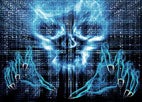Check Point Software Technologies gives IT organizations the ability to inspect any suspicious Microsoft Word or Adobe PDF file with a content inspection engine that has been added to the Check Point software security platform.
With the release of Check Point R77 software blade, Check Point also provides an emulation service delivered via the cloud that allows IT departments to run suspicious files in a sandbox environment to identify what type of calls that file is trying to make without exposing it to other corporate applications.
According to Fred Kost, head of product marketing at Check Point Software, the goal is to put more actionable security intelligence in the hands of IT organizations at a time when advanced persistent threats (APTs) are targeting specific users and organizations. Rather than being dependent solely on identifying signatures of malware, Kost says Check Point R77 gives IT organizations the ability to more proactively defend themselves from potential new threats.
Pricing for the ThreatCloud Emulation Service is based on a global organizational quota, which begins at a monthly list price of $500 for up to 10,000 inspected files.
In addition to the content inspection engine and threat emulation service, Check Point has added support for RADIUS identity awareness software, central device management and compliance capability delivered within a software blade that plugs into the Check Point firewall platform.
The latest Check Point security intelligence additions are limited to Word and PDF files running in Windows. But Kost says it’s logical to anticipate that Check Point will be extending that capability out to other types of files and operating systems.
With over 70,000 new types of malware being created and distributed each day, the sheer volume of attacks is now beyond the ability of signature-based security technologies to keep pace. That doesn’t mean organizations should stop deploying anti-malware software, but it does create a need to augment the capabilities of those products with security defenses that rely more on automation and isolation to proactively defend the IT environment.



